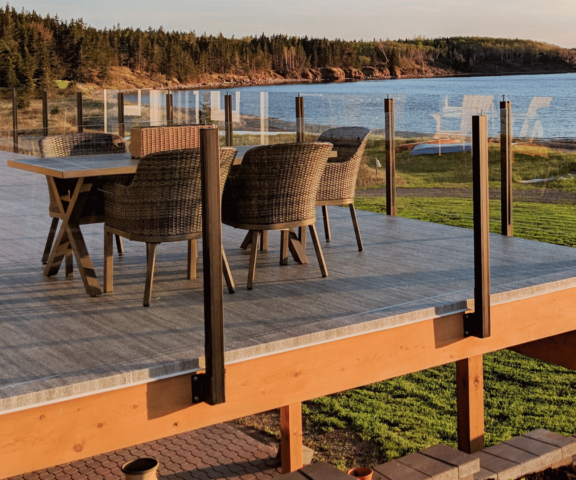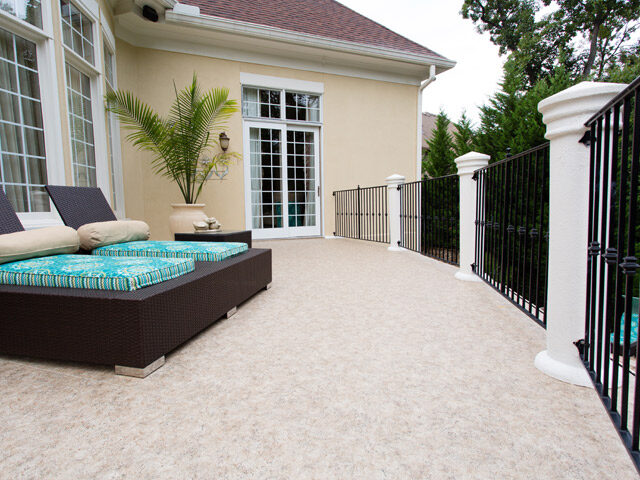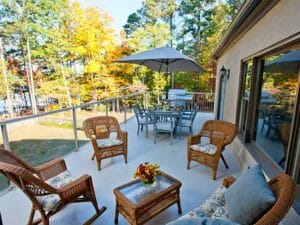USA: 1-800-338-3568 | CANADA: 1-866-591-5594
Housing Market Influences Growth of Plastics in Building Materials
Plastics News recently broke down how plastic products have pushed the envelope when it comes to changes in the building industry over the last quarter century. Duradek is proud to have been a trailblazer with the use of PVC in deck construction that began 40 years ago and still today continues to be one of the most effective ways of protecting the building envelope.
Plastics News reported that putting a proper seal on the building envelope is one of plastic’s biggest contributions to construction in the last 25 years, according to Edward Hudson, director of the market research division for home Innovation Research Lads, a subsidiary of the National Association of Home Builders.
While this includes products like flash tape around doors and windows to wraps around entire exterior shells, material science experts have improved building performance with plastic. Duradek may have helped lead the way as Duradek sheet vinyl and sealing techniques developed in the first half of the company’s history certainly influenced the use of vinyl as a superior waterproofing option.
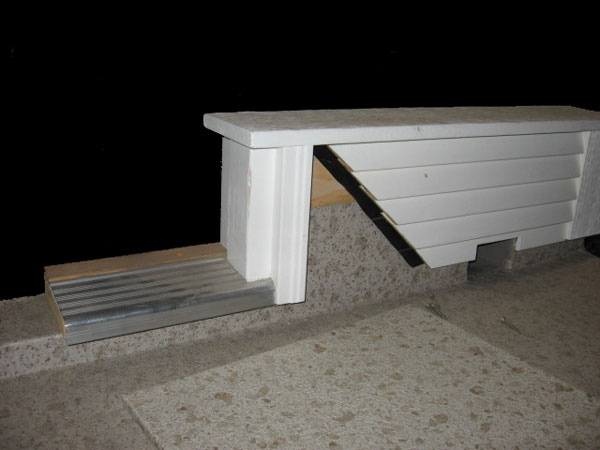
The inside perimeter where deck meets wall and door threshold
is a critical junction for building envelope protection.
While originally established as a deck waterproof surface for its ability to provide a water-tight seal as well as a pedestrian traffic coating, Duradek’s PVC membrane was first tested and approved for use as a roofing membrane in 1990.
 Related .pdf: The Duradek Story
Related .pdf: The Duradek Story
Graphic Timeline: Duradek – A Legacy of Leadership
Since that time, Duradek vinyl membranes and sealing techniques have been imitated by multiple competing brands that simply do not have the longevity of experience that Duradek offers in the niche market of deck and flat roof pedestrian deck waterproofing.
Related Post: New Does Not Always Mean Better
Decking, as a category, is one of the biggest contributors to the growth of plastics use in the building industry. This growth is mostly attributed to composite decking products which have grown from virtually non-existent 25 years ago to being an estimated 25-35% of the market. Since composite decking products are a relatively immature product in the market, there have been many growing pains along the way including several class action suits due to product failure and multiple trademarked brands coming, going and changing hands.
Related Post: Vinyl Decking Vs. Composite Decking – Is the Price Worth the Cost?
Another influence that is driving the increase of plastics in the building industry is the growing preference for green housing. McGraw Hill Construction estimates that the green market was 2 percent of residential starts in 2005 but increased to 6 to 10 percent in 2008 and was at least 12 percent in 2013.
While a green build may not be the primary influencer of home buyers, it has become an increasingly notable feature that green builders have been pulling people along into. Duradek vinyl is a green product and contributes to LEED points for green build projects.
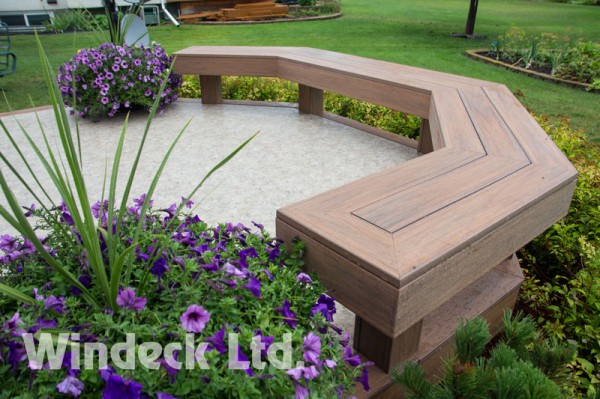
bench makes best use of plastics for low maintenance decking.
Project and image by Windeck Ltd.
As decks continue to gravitate from humble wooden platforms to sprawling multi-level extensions of the home, Duradek PVC membranes continue to protect decks, roof decks and the building envelope for the costly damage that can arise from water infiltration and wood rot and mold. All this, while also providing an attractive, low-maintenance surface that can last for decades.
For detailed drawings, specifications and other architectural information on Duradek, visit our Architectural Overview page.

